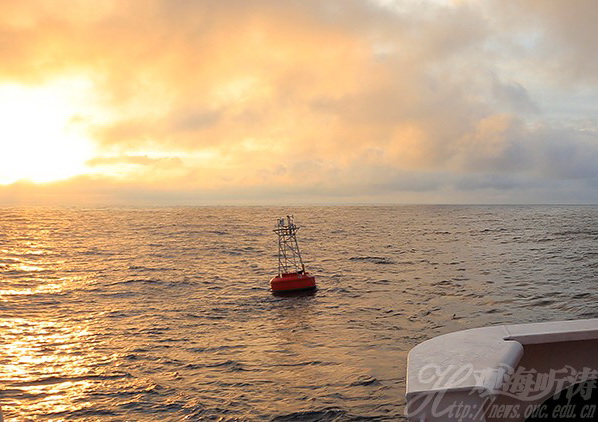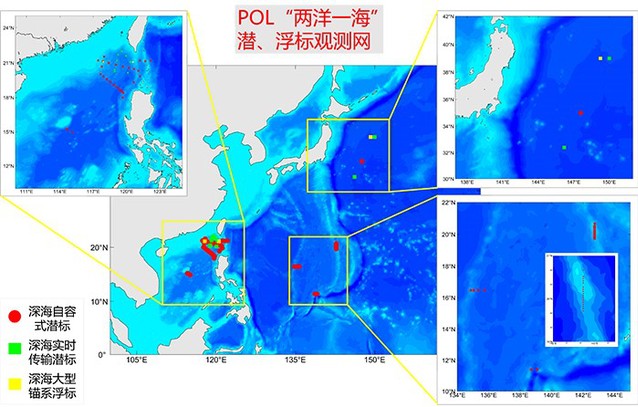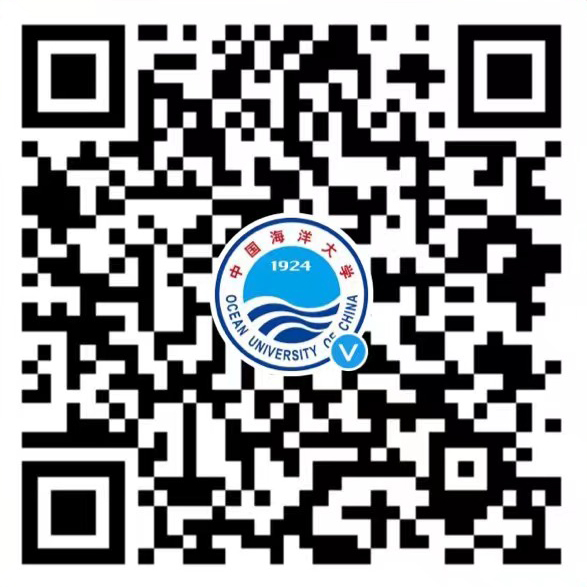
“Dong Fang Hong 3”, Ocean University of China’s new research vessel, has recently completed a scientific expedition about the Kuroshio Extension and returned. The research team deployed a large-scale observation buoy system, independently developed by China, in the Kuroshio Extension in the Northwestern Pacific.
The deep-sea submerged buoy system was successfully updated to a real-time working one, marking a great improvement of OUC’s real-time observation capacity in the Pacific, the Indian Ocean and South China Sea.
The Kuroshio Extension of Northwestern Pacific is the most active area of oceanic and atmospheric dynamic process, and also a critical area for climate change in the Pacific and even the whole world. The area has always been a focus of attention of the Pacific countries, but it is also one of the least known parts of the world due to the lack of ocean observation data. Because of the complex marine environment and severe weather conditions, only the US has a large-scale observation buoy system in this area. With the support of OUC and the Pilot National Laboratory for Marine Science and Technology (Qingdao), researchers have achieved a number of technological breakthroughs in the past few years, having deployed a large buoy in the north side of the main axis of the Kuroshio Extension, where conditions are worse. Currently, the buoy is still running stably after typhoons, transmitting key data of the air-sea interface in real time, and providing critical data for the research of air-sea interactions in the middle latitude area.








